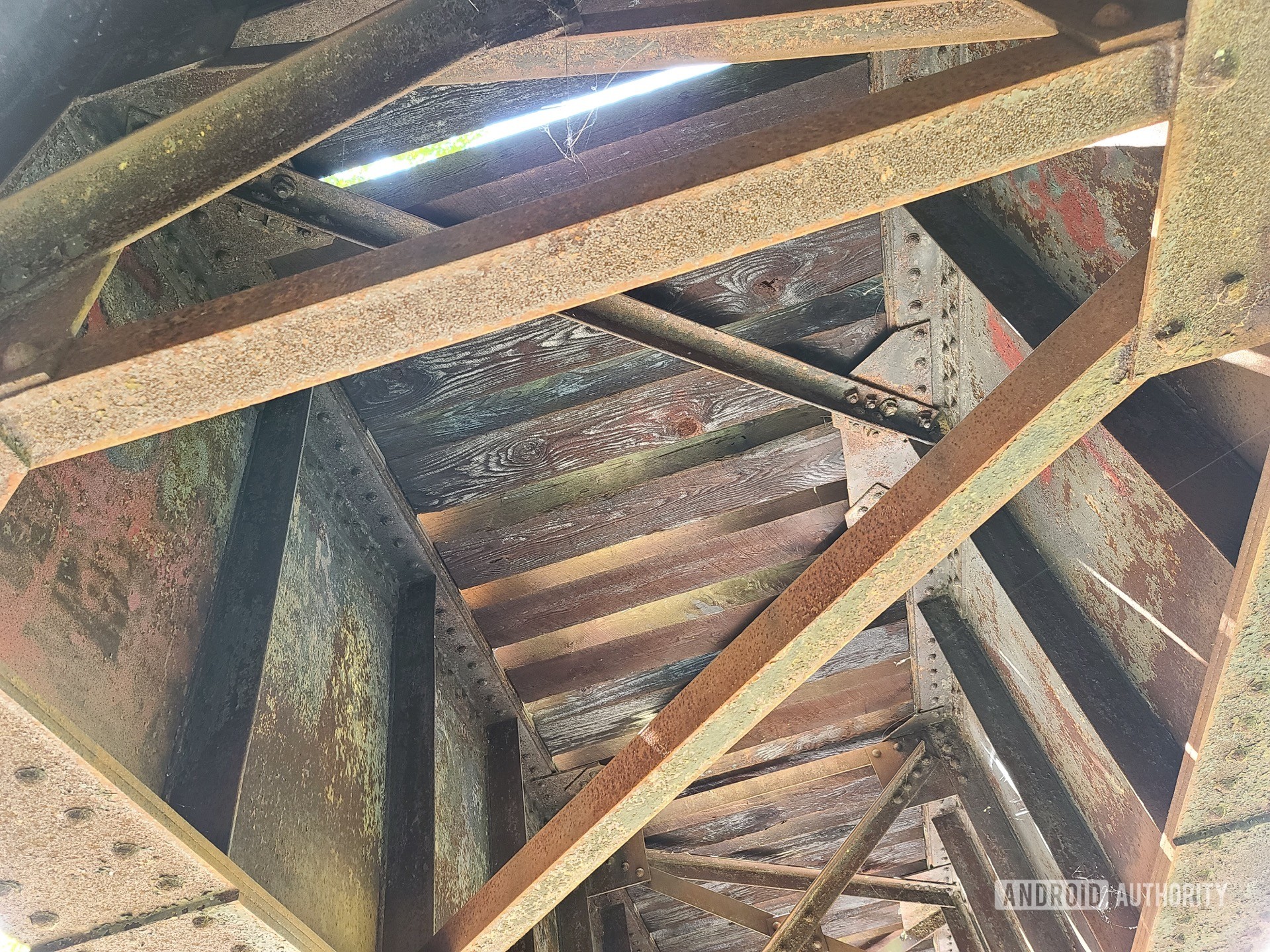
Samsung has not one, but two phones vying for top camera of the year. The Samsung Galaxy Note 20 Ultra is a photography monster, but the Galaxy S20 Ultra is a picture-taking beast too. These two flagships from the same company have lots of similarities when it comes to their cameras, but there are also plenty of differences. Can the newer Note 20 Ultra’s upgraded specs give it the edge? That’s what we aim to prove in our Galaxy Note 20 Ultra vs Galaxy S20 Ultra camera shootout.
See also: Best Samsung phones you can buy
Samsung Galaxy Note 20 Ultra vs Galaxy S20 Ultra: Camera specs
On the surface, it would appear that the two phones share almost identical camera specs. Both have 108MP main sensors, for example, and each shoots with what looks to be the same 12MP ultra-wide sensor. The focusing systems are wildly different.
The Note 20 Ultra has a laser autofocus system, which is being used to sidestep the problems created by the S20 Ultra’s time-of-flight camera. Another spot where the two phones differ is the telephoto. The Note 20 Ultra has a conservative 12MP telephoto with 5x optical and 50x hybrid zoom, while the S20 Ultra has a 48MP telephoto sensor with 4x optical and 100x hybrid zoom.
If there’s any difference in how these cameras perform, it will be zoom. Video capture capabilities are the same with 8K at 24fps for the main cameras at 4K at 60fps for the front cameras. Here are the details:
| Galaxy Note 20 Ultra | Galaxy S20 Ultra | |
|---|---|---|
| Rear cameras | Wide-angle: 108MP PD OIS ƒ/1.8, 0.8μm Telephoto: 12MP ƒ/3.0, 1.0μm, optical 5x zoom Ultra-wide: 12MP ƒ/2.2, 1.4μm Laser AF |
Wide-angle: 108MP, 1/1.33″, ƒ/1.8, 0.8µm Telephoto: 48MP, ƒ/3.5, .8µm Ultra-wide: 12MP, ƒ/2.2, 1.4µm VGA time-of-flight sensor |
| Rear video | 8K @ 24fps | 8K @ 24fps |
| Front cameras | 10MP 2PD AF ƒ/2.2, 1.22μm | 40MP AF ƒ/2.2, .7µm |
| Front video | 4K @ 60fps | 4K @ 60fps |
The samples
 Samsung Galaxy Note 20 Ultra photo sample indoors Samsung Galaxy S20 Ultra photo sample indoors
Samsung Galaxy Note 20 Ultra photo sample indoors Samsung Galaxy S20 Ultra photo sample indoors

Let’s start with an indoor shoot. Here we can see wildly different white balance. The Note 20 Ultra gets it right, while the S20 Ultra skews a bit too far in the warm direction. Focus is also better in the Note 20 Ultra shot. You can see the details in the painting just a bit more easily in the shot from the Note 20 Ultra.
Related: The best Android camera phones you can get
 Samsung Galaxy Note 20 Ultra photo sample 108MP Samsung Galaxy S20 Ultra photo sample 108MP
Samsung Galaxy Note 20 Ultra photo sample 108MP Samsung Galaxy S20 Ultra photo sample 108MP

Here are two shots taken at 108MP. What strikes me about these images is the detail visible in the brick, which is good across both shots. You can see the contouring of each individual brick. The Note 20 Ultra took a slightly brighter image that looks a bit more natural. The S20 Ultra shot is a bit darker and exhibits higher contrast. I like the shot from the Note 20 Ultra better in this comparison.
 Samsung Galaxy Note 20 Ultra photo sample HDR Samsung Galaxy S20 Ultra photo sample HDR
Samsung Galaxy Note 20 Ultra photo sample HDR Samsung Galaxy S20 Ultra photo sample HDR

These HDR samples show what both phones are capable of accomplishing. The sun was directly overhead and I was standing in the shadow cast by a train trellis. The overall image quality is good. Again, however, the Note 20 Ultra gets it a bit more right. There’s more detail visible under the bridge and the sky is a nicer, richer shade of blue (though just by a little). There’s less detail in the shadows in the shot taken by the S20 Ultra.
See also: Samsung Galaxy Note 20 vs Galaxy Note 10 series: Should you upgrade?
 Samsung Galaxy Note 20 Ultra photo sample COLOR Samsung Galaxy S20 Ultra photo sample COLOR
Samsung Galaxy Note 20 Ultra photo sample COLOR Samsung Galaxy S20 Ultra photo sample COLOR

In this sample, I think we have a dead heat. The color representation, white balance, and overall tone are equal. There may be a hint more detail in the shot from the Note 20 Ultra, but it’s tiny enough to not be a factor in judging. I like the consistency here from Samsung.
 Samsung Galaxy Note 20 Ultra photo sample low light Samsung Galaxy S20 Ultra photo sample low light
Samsung Galaxy Note 20 Ultra photo sample low light Samsung Galaxy S20 Ultra photo sample low light

This is the first shot where I think the S20 Ultra is the clear winner. There are gobs of noise in the images from both cameras, but the noise from the Note 20 Ultra is more distracting. The S20 Ultra captured a cleaner, richer image overall. I particularly like the color, which is truer to life.
 Samsung Galaxy Note 20 Ultra photo sample sunset Samsung Galaxy S20 Ultra photo sample sunset
Samsung Galaxy Note 20 Ultra photo sample sunset Samsung Galaxy S20 Ultra photo sample sunset

I was a little disappointed by these images. Both completely blew out the sun, which was behind some light clouds. You can see the loss of detail in the center of the frame. The shot from the Note 20 Ultra is more accurate, while the shot from the S20 Ultra is richer in terms of color detail. It boils down to personal preference, I think. This is a tough one to call.
 Samsung Galaxy Note 20 Ultra photo sample low light dusk Samsung Galaxy S20 Ultra photo sample dusk
Samsung Galaxy Note 20 Ultra photo sample low light dusk Samsung Galaxy S20 Ultra photo sample dusk
These two images are very close. The sky and water are exposed about the same in each, with approximate color. Where the Note 20 Ultra pulls ahead is in the darker regions, where you can make out some of the houses on the other side of the lake. The S20 Ultra loses those same details.
 Samsung Galaxy Note 20 Ultra photo sample selfie Samsung Galaxy S20 Ultra photo sample selfie
Samsung Galaxy Note 20 Ultra photo sample selfie Samsung Galaxy S20 Ultra photo sample selfie

This sample selfie is a study in contrast. The Note 20 Ultra took a cooler shot with higher contrast, while the S20 Ultra’s sample is warmer. I particularly like how the shot from the S20 Ultra shows some natural bokeh in the background, though some users may want the entire frame to be in focus. It’s a fine pair of selfies.
 Samsung Galaxy Note 20 Ultra photo sample selfie portrait Samsung Galaxy S20 Ultra photo sample selfie portrait
Samsung Galaxy Note 20 Ultra photo sample selfie portrait Samsung Galaxy S20 Ultra photo sample selfie portrait

As for the selfie portrait, well, we can see the same color issues as the traditional selfie shot. I think edge detection is equal between the two phones, with accurate trimming even around my hair. I’m not going to call a winner here. These are excellent portraits from a phone’s selfie camera that shy away from looking fake.
 Samsung Galaxy Note 20 Ultra photo sample flowers Samsung Galaxy S20 Ultra photo sample flowers
Samsung Galaxy Note 20 Ultra photo sample flowers Samsung Galaxy S20 Ultra photo sample flowers

In this comparison, it’s the Note 20 Ultra that looks a bit warmer and slightly oversaturated in these shots of some flowers. The sample from the S20 Ultra is cleaner and looks more natural. There’s plenty of detail in both images.
This series of photos examine the wide, standard, and telephoto lenses of both phones. The exposures from the wide-angle cameras look identical, as they should given they are taken from the same sensor. The standard 1x image shows the same color issue from the S20 Ultra that we’ve seen across this entire series, as do the 2x and 5x shots. All the images are clean, with minimal noise. In this series, I like the Note 20 Ultra’s images better with the exception of the 5x show. The S20 Ultra is clearly overstating the greens, but taken as a whole the image simply looks richer.
More Samsung camera shootouts:
Samsung Galaxy Note 20 Ultra vs Galaxy S20 Ultra camera shootout: The verdict
The Samsung Galaxy S20 Ultra’s camera took a lot of heat when it was first released. It exhibited focus issues and tended to apply a too-warm color balance to many shots. Given that the sensors for the main and ultra-wide camera are identical across both cameras, it’s clear that Samsung has tweaked its processing. The shots from the Note 20 Ultra are sharper and more accurate. They may not have the super color saturation of the shots from the S20 Ultra, but in this case we think accuracy is better. In sum, we’re giving the win to the Note 20 Ultra, though by just a hair.
Which Samsung flagship do you think takes better photos? Cast your vote in the poll below and for a more detailed breakdown of all the differences between the two phones, check out our Galaxy Note 20 vs Galaxy S20 series comparison.






More Stories
Allegations of corruption Qatar warns of ‘negative impact’ of European measures
USA: Famous “Hollywood cat” euthanized in Los Angeles
The campaigner who called for the shooting of Ukrainian children has not been charged